An automated meta-analysis of 420 imaging studies - pain's effect on the brain.
neurosynth.org uses functional connectivity and coactivation mapping from thousands of MRI images (each comprised of many cuts of images) are automated to show a final result of pain's effect on the brain. Created and maintained by Tal Yarkoni. Supported by NIH Grant R01MH096906.
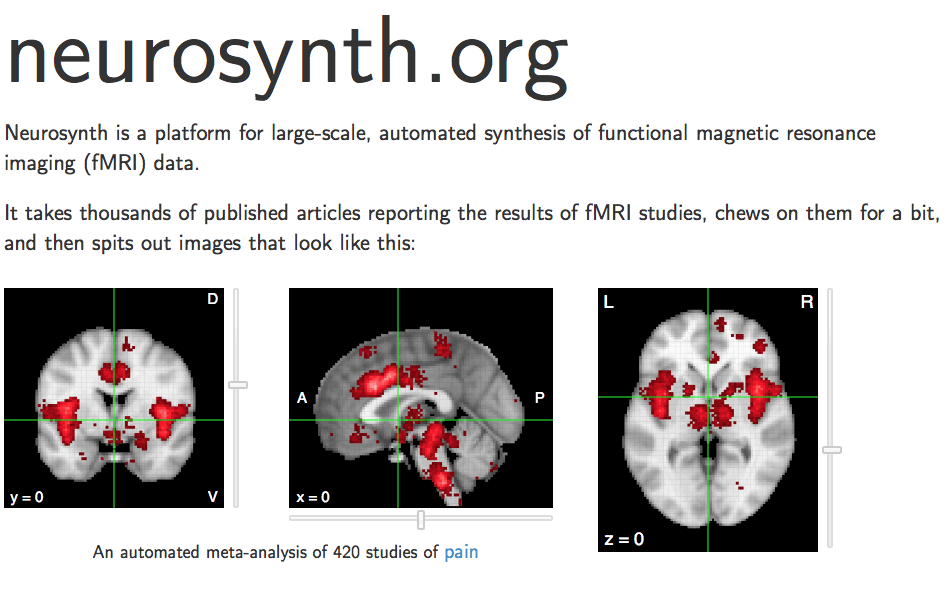 These are the brain areas affected by pain.[/caption]
These are the brain areas affected by pain.[/caption]2. Chronic back pain. Touch-pain circuits shape-shift to emotional circuits.
Hashmi JA, Balike MD, Baria AT, et al. Shape shifting pain: chronicification of back pain shifts brain representation from nociceptive to emotional circuits. Brain. 2013 Sep; 136(Pt 9): 2751-2768. https://www.ncbi.nlm.nih.gov/pubmed/23983029
[caption id="attachment_6942" align="aligncenter" width="309"]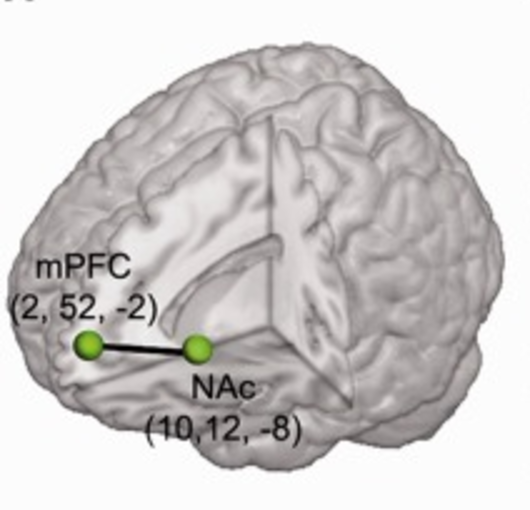 Hashmi JA, Balike MD, Baria AT, et al. Brain. 2013[/caption]
Hashmi JA, Balike MD, Baria AT, et al. Brain. 2013[/caption]3. Chronic back pain. Structural changes in the brain are hard-wired, predicting who will develop it after one year.
Mansour AR, Baliki MN, Huang L, et al. Brain white matter structural properties predict transition to chronic pain. Pain. 2013 Oct; 154(10): 2160-2168. https://www.ncbi.nlm.nih.gov/pubmed/?term=10.1016%2Fj.pain.2013.06.044
[caption id="attachment_6947" align="aligncenter" width="370"]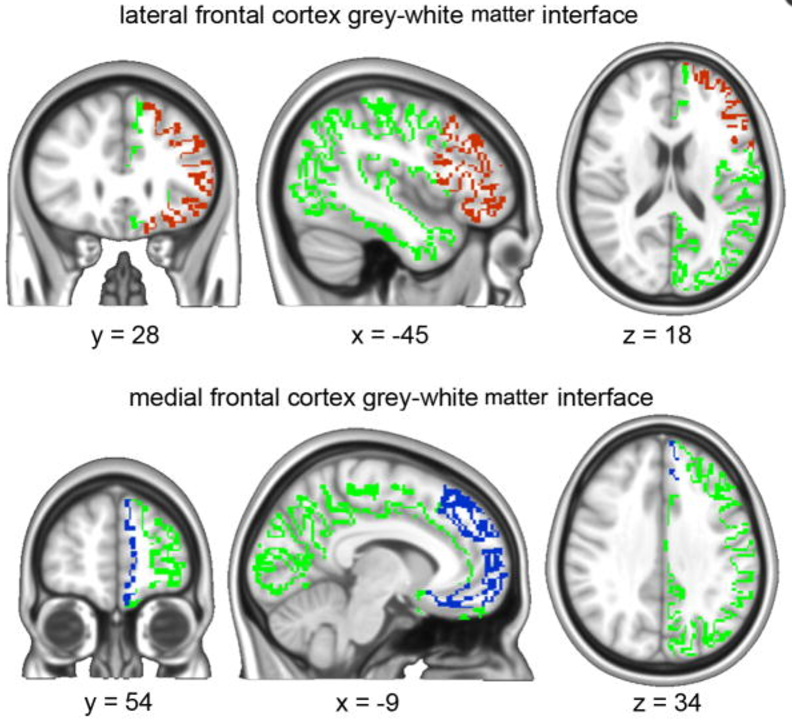 Mansour AR, Baliki MN, Huang L, et al. Pain. 2013[/caption]
Mansour AR, Baliki MN, Huang L, et al. Pain. 2013[/caption]4. Chronic pelvic pain. Causes microstructural changes in brain areas in how pain is felt, and how it is processed.
Woodworth D, Mayer E, Leu K, er al. Unique microstructural changes in the brain associated with urological chronic pelvic pain syndrome (UCPPS) revealed by diffusion tensor MRI, super-resolution track density imaging, and statistical parameter mapping: A MAPP Network neuroimaging study. PLoS One. 2015 Ovt 13; 10(10):e0140350. https://www.ncbi.nlm.nih.gov/pubmed/?term=Microstructural+changes+with+chronic+prostatitis%2Fchronic+pain+syndrome
[caption id="attachment_6955" align="alignnone" width="684"]
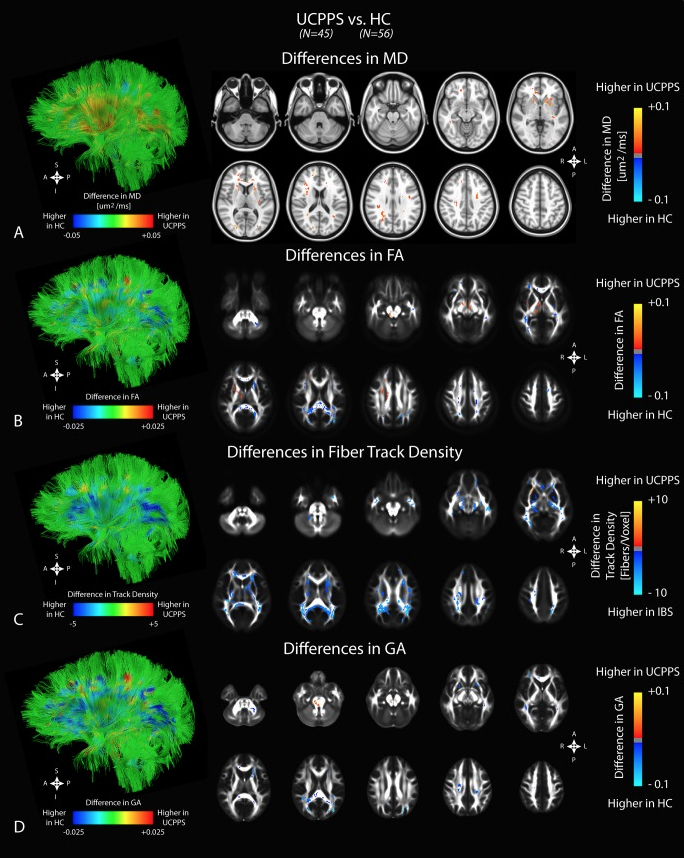 Unique microstructural changes in the brain associated with urological chronic pelvic pain syndrome (UCPPS) revealed by diffusion tensor MRI, super-resolution track density imaging, and statistical parameter mapping: A MAPP Network neuroimaging study. 2015.[/caption]
Unique microstructural changes in the brain associated with urological chronic pelvic pain syndrome (UCPPS) revealed by diffusion tensor MRI, super-resolution track density imaging, and statistical parameter mapping: A MAPP Network neuroimaging study. 2015.[/caption]5. Chronic Regional Pain Syndrome (CRPS). In "the suicide disease", inattention in near space may occur together with distorted body perception.
Janet H. Bultitude, Ian Walker, Charles Spence; Space-based bias of covert visual attention in complex regional pain syndrome. Brain 2017 awx152. doi: 10.1093/brain/awx152 https://academic.oup.com/brain/article-lookup/doi/10.1093/brain/awx152 doi: 10.1093/brain/awx152
[caption id="attachment_7032" align="alignnone" width="1184"]
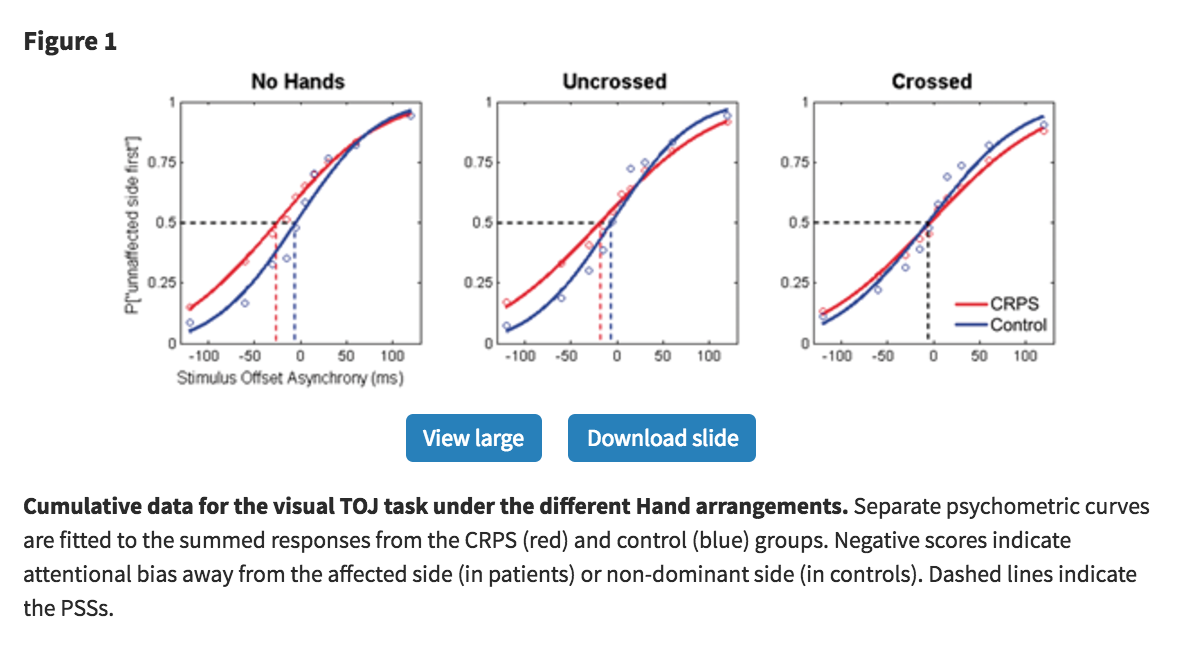 Space-based bias of covert visual attention in complex regional pain syndrome. 2017.[/caption]
Space-based bias of covert visual attention in complex regional pain syndrome. 2017.[/caption]6. Chronic Pain. Vulnerability to develop a painful condition relates to two brain regions: the reward-motivation and the Descending Pain Modulatory System (DPMS).
Denk F, McMahon SB, and Tracey, I. Pain vulnerability: a neurobiological perspective. Nature Neuroscience 2014: 17, 192-200. http://www.nature.com/neuro/journal/v17/n2/full/nn.3628.html
[caption id="attachment_7040" align="alignnone" width="1098"] Pain vulnerability: a neurobiological perspective. 2014.[/caption]
Pain vulnerability: a neurobiological perspective. 2014.[/caption]7. Chronic pain and depression. Various drugs act at different sites in the cascade of neuroplasticity that cause chronic pain to develop into depression.
Shang J, Liu S, Wang Y, Cui R, and Zhang X. The Link between depression and chronic pain: neural mechanisms in the brain. Neural Plast. June 19, 2017; 9724371. https://www.ncbi.nlm.nih.gov/pmc/articles/PMC5494581/
- [caption id="attachment_7053" align="alignnone" width="992"]
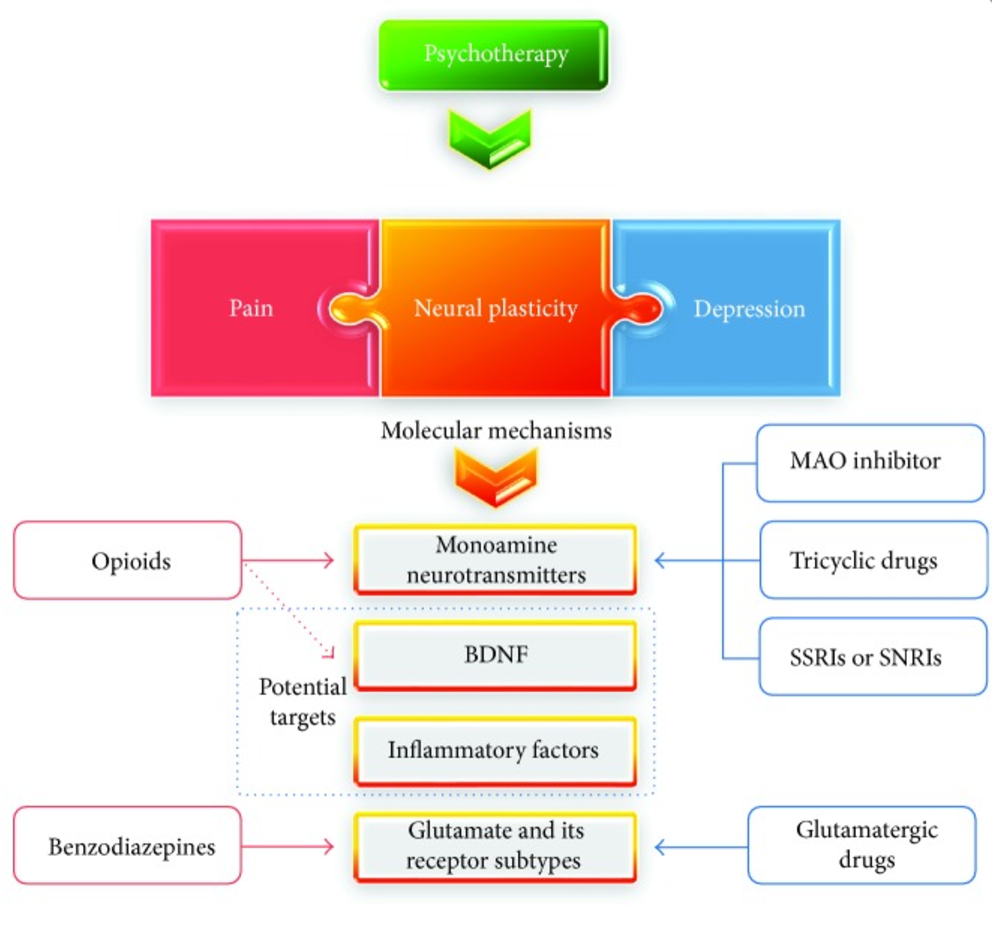 The Link between Depression and Chronic Pain: Neural Mechanisms in the Brain.
The Link between Depression and Chronic Pain: Neural Mechanisms in the Brain.
# # #
THE END
# # #
This article was originally published on Dr. Aranda's companion site, The MD, PhD Is In.

No comments:
Post a Comment
Your Comment Matters to Me! Thanks for your Time and Muaaah!